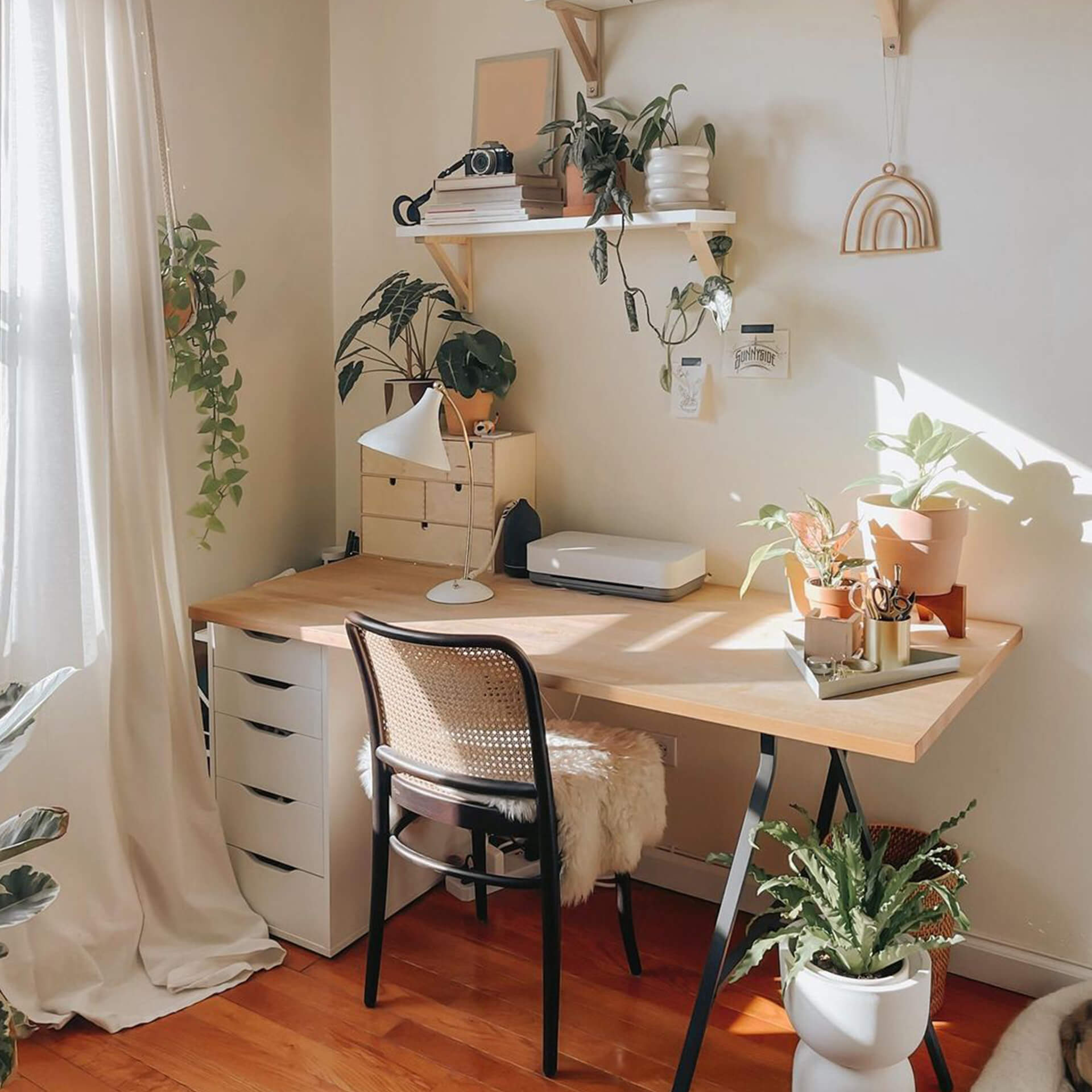Aesthetic Decor Trends and Styles

In the realm of interior design, aesthetic decor trends are constantly evolving, reflecting the changing tastes and aspirations of homeowners. From the serene minimalism of Japandi to the eclectic maximalism of boho chic, there’s a style for every personality and space.
Japandi, Aesthetic decor
Japandi is a harmonious blend of Japanese and Scandinavian aesthetics, characterized by clean lines, natural materials, and a focus on functionality. Iconic pieces include futons, low-profile furniture, and paper lanterns. The color palette is typically neutral, with shades of white, beige, and black.
Maximalism
Maximalism is an exuberant style that embraces bold colors, patterns, and textures. It’s all about creating a visually stimulating space that reflects the homeowner’s personality. Key pieces include statement furniture, oversized artwork, and eclectic accessories. The color palette is often vibrant and eclectic, with no shortage of bold hues.
Coastal
Coastal decor evokes the relaxed atmosphere of a seaside retreat. It’s characterized by light and airy colors, natural textures, and coastal-inspired accents. Iconic pieces include driftwood furniture, jute rugs, and seashell accessories. The color palette is typically inspired by the ocean, with shades of blue, green, and white.
Elements of Aesthetic Decor

The principles of aesthetic decor form the foundation for creating visually appealing and harmonious spaces. These principles include balance, proportion, and scale, and they work together to create a sense of order and unity within a room. Texture, pattern, and color also play crucial roles in creating a cohesive and visually appealing space.
Balance
Balance refers to the distribution of visual weight within a space. There are three types of balance: symmetrical, asymmetrical, and radial. Symmetrical balance is achieved when the elements of a space are evenly distributed on either side of a central axis. Asymmetrical balance is achieved when the elements of a space are not evenly distributed, but still create a sense of visual equilibrium. Radial balance is achieved when the elements of a space are arranged around a central point.
Proportion
Proportion refers to the relationship between the size of different elements within a space. The golden ratio, which is a ratio of approximately 1:1.618, is often used to create pleasing proportions in design. Proportion can also be used to create visual interest and drama within a space.
Scale
Scale refers to the size of objects in relation to the size of the space they occupy. It is important to choose objects that are appropriately scaled to the size of the room. Oversized objects can make a room feel cramped, while undersized objects can make a room feel empty. Scale can also be used to create visual interest and drama within a space.
Texture
Texture refers to the surface quality of objects. Different textures can create different visual effects, such as warmth, coolness, softness, or roughness. Texture can be used to add interest and depth to a space. It can also be used to create contrast and define different areas within a room.
Pattern
Pattern refers to the repetition of elements within a design. Patterns can be used to create visual interest and movement within a space. They can also be used to create a sense of unity and cohesion. Patterns can be found in a variety of forms, such as stripes, checks, plaids, and florals.
Color
Color is one of the most important elements of aesthetic decor. It can be used to create a variety of moods and atmospheres within a space. Color can also be used to highlight certain features of a room or to create a focal point. There are many different color theories that can be used to create pleasing color schemes. Some of the most common color theories include the color wheel, the triadic color scheme, and the complementary color scheme.
Combining Elements
When combining different elements of aesthetic decor, it is important to consider the overall effect you want to create. You should also keep in mind the principles of balance, proportion, and scale. By carefully combining different elements, you can create a space that is both visually appealing and harmonious.
Aesthetic decor encompasses a wide range of styles, from the minimalist to the eclectic. One popular trend in aesthetic decor is the incorporation of arch decor , which adds a touch of architectural interest to any space. Arches can be used in a variety of ways, from creating doorways and windows to framing artwork and mirrors.
They can be made from a variety of materials, including wood, metal, and plaster, and can be painted or stained to match any decor. Whether you’re looking to add a touch of elegance or a bit of whimsy to your home, arch decor is a great way to do it.
Aesthetic decor has become a popular trend, and one of the most popular elements is dried pampas grass. Dried pampas grass adds a touch of natural beauty to any room, and it can be used in a variety of ways.
Whether you’re looking to create a boho-chic look or simply add a touch of warmth to your space, dried pampas grass is a great option. And because it’s a natural material, it’s also eco-friendly. So if you’re looking for a way to update your home decor, consider adding some dried pampas grass.